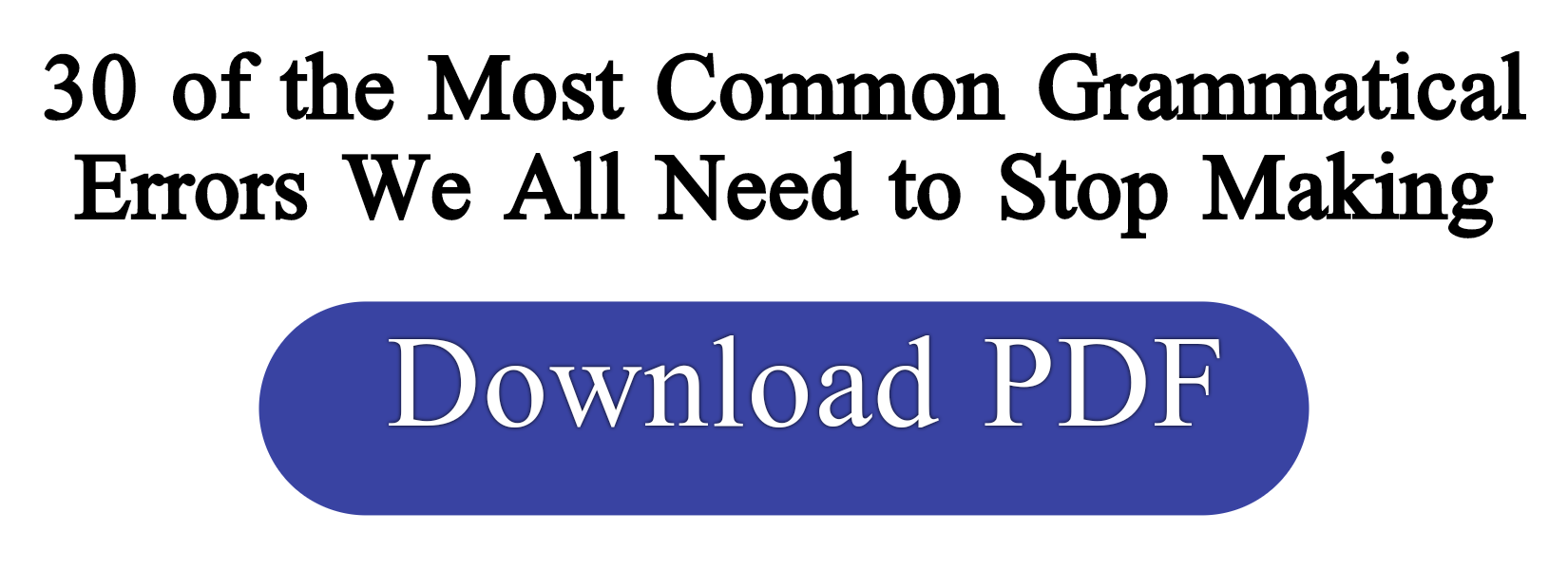Punctuation marks are signs in writing and printing. They serve two main functions: separation of successive units to clarify the sense of a paragraph, and specification of language function. It is necessary to learn to use all the punctuation marks correctly.
1. The period (.)
A period is used at the end of an indicative sentence or a mildly imperative sentence to indicate the end of an integral sense.
Use a period with abbreviations:
Dr. Espinoza arrived from Washington, D.C., at 6 p.m.
Notice that when the period ending the abbreviation comes at the end of a sentence, it will also suffice to end the sentence. On the other hand, when an abbreviation ends a question or an exclamation, it is appropriate to add a question mark or exclamation mark after the abbreviation-ending period:
Did you enjoy living in Washington, D.C.?
Three spaced periods (…, the ellipsis mark) mean the omission of one or more words. With the three-dot method, you may leave out punctuation in the original.
the study of literature should, first and foremost, concentrate on the actual works of art themselves.
You pride yourself on your good home cooking…
The comma (,)
The comma is chiefly used to clarify the sense of a sentence by separating equal items such as words, phrases or clauses in a series, and by setting off modifiers or parenthetical words, phrases or clauses.
The exercise instructor told us to inhale, exhale, and relax. (separating equal items)
The lecture was good, but few people were present. (setting off the clause)
Nonrestrictive clauses and phrases (which are added to sentences but do not change their basic meaning) are set off by commas:
The Founders Bridge, which spans the Connecticut River, is falling down.
Restrictive clauses and phrases are not set off by commas:
Young people who have taken piano lessons enjoy going to concerts.
One of the frequent confusions about the use of comma is its use in dates, in which a comma is used to separate the day from the year if the order is month/ day/ year (March 27, 1993). But no comma is needed if the order is day/ month/ year (27 March 1993).
A comma is used to set off quoted elements.
Lucia White said, “People live in cities but dream of the countryside.” Do not use a comma when giving an indirect quotation.
Lucia White said that people dream of the countryside, even though they live in cities.
If an attribution of a quoted element comes in the middle of the quotation, two commas will be required. But be careful not to create a comma splice in doing so.
“The question is,” said Alice, “whether you can make words mean so many things.” “I should like to buy an egg, please,” she said timidly. “How do you sell them?” A comma can be used to avoid confusion.
Confused:For most the year is already finished.
Clear:For most, the year is already finished.
3. The semicolon (;)
A semicolon is used between coordinate phrases and clauses not joined by coordinate conjunctions (for, and, nor, but, or, yet, so) but sometimes by logical connectors (however, for instance, nevertheless, etc.).
It’s getting late; we’d better go home. (between clauses)
Tension rose rapidly during yesterday’s meeting; nevertheless, most of the Council members remained calm. (joined by logical connectors)
Chinese students are more familiar with the comma than with the semicolon. It is suggested that they study the use of the semicolon carefully and try to use it appropriately.
4. The colon (:)
A colon has the implication of “namely” or “that is” and is internally used in sentences to introduce things as formal appositives, which are usually statements, quotations or series or items. Sometimes a colon can go before namely or that is, but not after them.
He told me the good news: taxes are to be reduced.
The author made a difficult decision: that is, he would abandon the manuscript.
A colon is used to explain preceding elements in a sentence, where it has the implication of “because”:
You can’t count on him to help: he is such a busy man.
A colon can also be used to separate the hour from the minute, to mark the scores of games, and to end the salutation of a business letter, and the introductory remark of a speaker to the audience:
The plane will leave at 11:30 a.m.
China beat Japan 3:2 in the women’s volleyball tournament.
Dear Sir or Madam: (After the salutation, the comma is more common.)
Mr. Chairman, ladies and gentlemen: (the beginning of a speech)
Do not use a colon after words like including and such as.
Wrong: For breakfast we have things such as: milk, bread, and fruit.
Right: For breakfast we have things such as milk, bread, and fruit.
5. The question mark (?)
A question mark is put after a direct (but not indirect) question to ask a question or demonstrate some doubt. Sometimes it is used when a declarative or an imperative sentence is converted into a question.
You ate that apple?
A question mark within parentheses indicates the writer’s uncertainty about the correctness of the preceding word, figure, or date.
The author of this novel was born in 1033 (?) and died in 1095.
6. The exclamation mark (!)
An exclamation mark is used to express surprise, strong emotion, special emphasis, excitement, or urgency.
What a gifted violinist!
But it should be used carefully. Mild interjections and mildly exclamatory sentences may as well be closed with a comma or a period.
“What a nice day,” she said.
7. The quotation marks (“”) (‘’)
Double quotation marks (“”) are used to quote the exact words of a speaker or a writer and to set off some titles. Single quotation marks (‘’) are used to enclose an internal quotation — a quotation within a quotation.
“Roy, the men are shouting ‘get out,’” she said.
The colon and semicolon are placed outside the quotation marks. In the United States, however, periods and commas go inside quotation marks regardless of logic.
First he talked about “New Criticism”; then he discussed “postmodernism.”
The dash, question mark and exclamation mark are placed within the quotation marks when they are connected only with the quoted words; they are placed outside when they are connected with the whole sentence:
He asked, “Are you sure Mary will come?”
What is the meaning of “New Criticism”?
8. Parentheses (( )) and brackets ([ ])
Parentheses and brackets are used to enclose loosely related additions for comment or explanation or to enclose figures which number items in a series. In British English, parentheses and brackets are used interchangeably.
We looked down from a great height (the mountain heights) to see the whole city.
Brackets are used to replace parentheses within parentheses:
William Strunk Jr. and E. B. White wrote a very useful book for students learning to write (The Elements of Style [New York: Macmillan, 1972]).
9. The dash (—)
A dash is used to introduce summaries, meaning in short, in a word, in conclusion, and to indicate interruptions, parenthetical remarks and quotations. Sometimes, the part after the dash can be sudden interruption in a chain of thought.
Attic fans, window fans, air-conditioners — all were ineffective that summer. (summary)
We have — aha! — no cure for influenza. (sudden interruption in a chain of thought)
A dash signals a pause longer than a comma but not as complete as a period. It creates a separation or interruption stronger than commas or parentheses.
In Vienna everything — opera, theaters, shops, cafes — are within easy walking distance.
10. The hyphen (-)
Hyphens are used to join two or more words to form compounds or to split a word syllabically at the end of a line when there is not enough space for the whole word.
take-off, brother-in-law, thirty-year-old writer
11. The apostrophe (’)
The apostrophe is used for the formation of the possessive case: a moment’s rest. To show ownership or possession for plural nouns ending with s, add only an apostrophe to the end of the word: babies’ toys.
The apostrophe can also be used to mark the omission of one or more than one letter and the formation of the plural numbers of letters, figures, etc.: I’ve, it’s, he’d, 1980’s, A’s…
12. The slash (/ )
The slash is used to separate alternatives, meaning or:
Everybody should try to grasp his/ her destiny.(his or her)
When fractions are written in a sentence, a slash is used to separate the numerator from the denominator:
A kilometer is 31/ 50 of a mile.
Slashes can also be used to indicate line divisions in poems quoted within a text:
The first stanza of “A Red, Red Rose” by Robert Burns (1759-1796) goes like this, “O, my luve is like a red, red, rose,/ That’s newly sprung in June./ O, my luve is like the melodies,/ That’s sweetly played in tune.”








